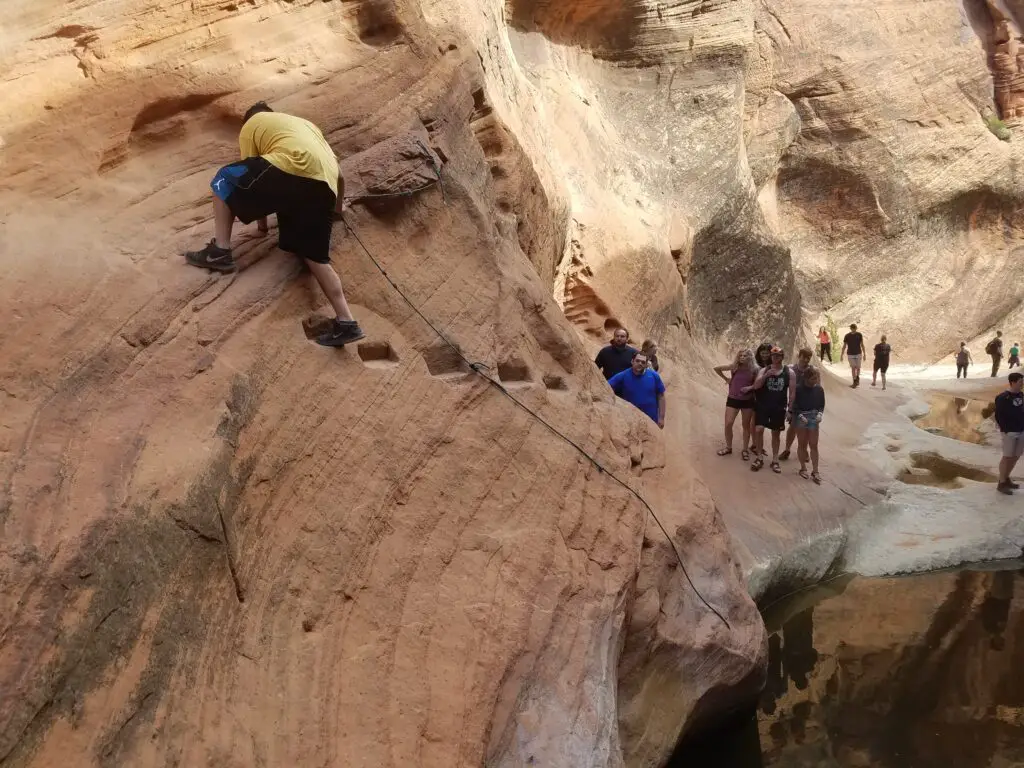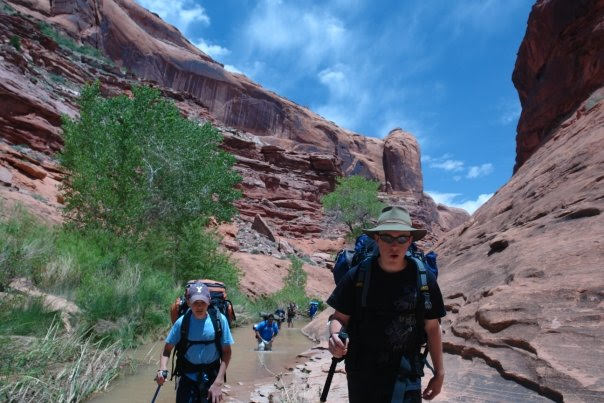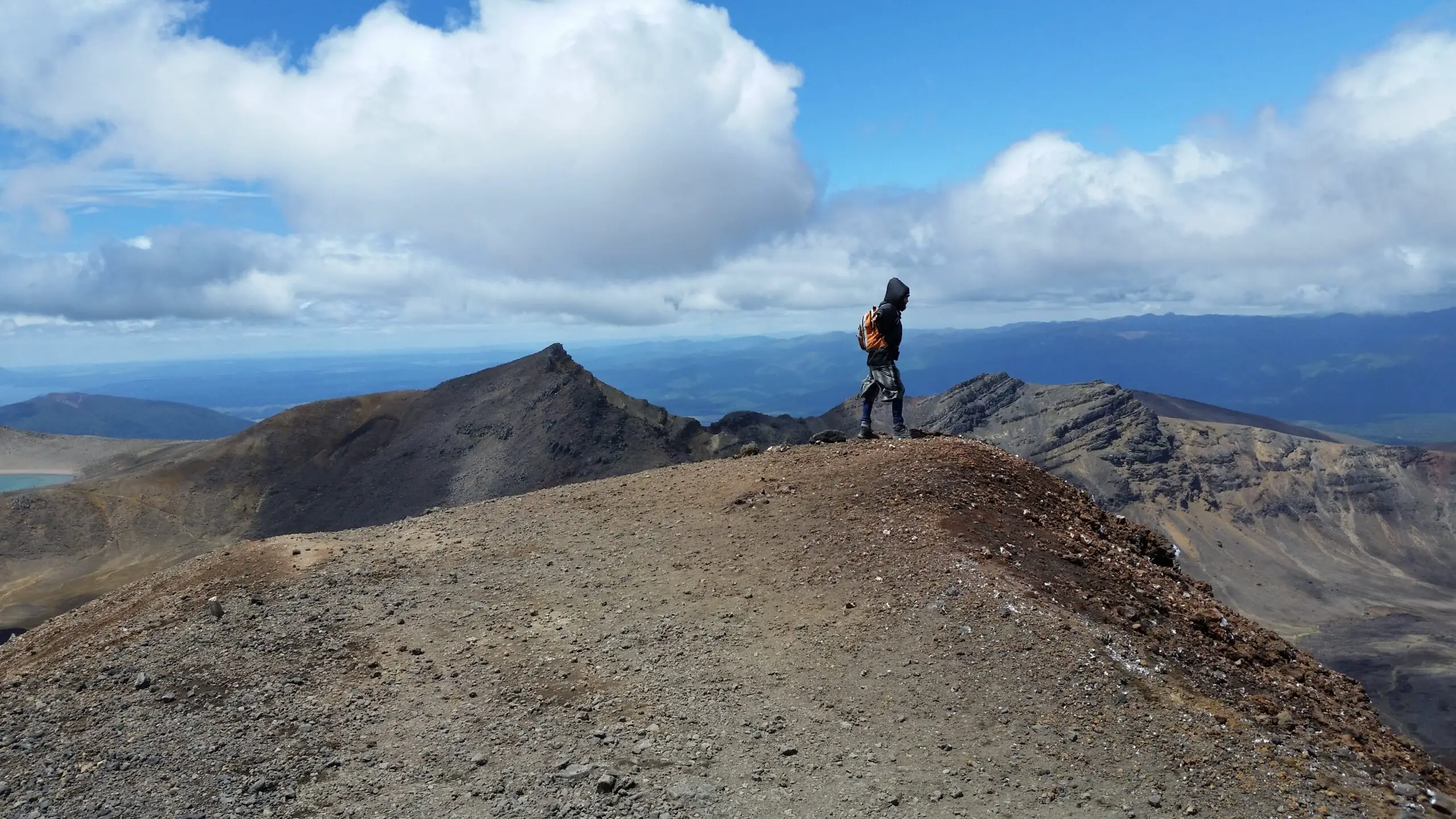The encouragement to move more is not a new piece of advice. Physical activity improves heart, bone and muscle strength, protects mental health and aids in healthy weight maintenance. However, exercise proponents tend to focus mainly on running, walking and weight lifting.
Hiking can activate all of the muscles used in these other activities. With the elevation and other stressors that come with hiking, individuals may wonder, how many calories do you burn hiking versus walking?
Hikers burn, on average, 50% more calories than someone walking on level ground at the same pace. This is largely due to the varying grades hikers experience as they go up and down hills. Hiking with a heavy backpack can also help burn more calories, as well as going at a faster pace or up a steeper hill. A person’s weight factors into how many calories they burn walking or hiking.
| Hiker’s Weight | Moderate-paced hiking at 1–5% grade | Moderate-paced walking | Brisk walking |
|---|---|---|---|
| 120 pounds (55 kg) | 292 | 193 | 275 |
| 150 pounds (68 kg) | 360 | 238 | 340 |
| 180 pounds (82 kg) | 435 | 287 | 451 |
| 210 pounds (95 kg) | 504 | 333 | 475 |
| 240 pounds (109 kg) | 578 | 382 | 545 |
| 270 pounds (123 kg) | 652 | 431 | 615 |
The incline, terrain, speed, weight of backpack, environment and other considerations cause the calories burned to vary widely depending on the hike. Also, intrinsic factors such as sex, weight, height and genetics factor into the equation. Despite these variations, hiking usually burns more calories than walking. The above table from Healthline provide some baseline estimates for calories burned while hiking versus walking for one hour.
Continue reading to learn about hiking nutrition, hydration and how it supports weight loss goals.
Will Hiking Make me Lose Weight?
Hiking can contribute to weight loss, but may not automatically cause weight loss when unsupported by other healthy habits. Some hikers gain weight because they eat large quantities of snacks the whole time. A key pillar of sustainable weight loss is creating a moderate energy imbalance or calorie deficit.
Exercise increases energy output; dietary choices decrease energy input and lifestyle habits such as sleep and stress affect energy output/input as well. A combination of these factors creates that necessary energy imbalance.
One common practice that hinders weight loss is thinking exercise can just burn off the calories of poor eating. However, not only does eating too many foods high in sugar, saturated fat and sodium contribute to chronic disease, but individuals may find it surprisingly hard to match exercise with excessive calories.
For example, an individual who hikes for one hour may burn 300-400 calories depending on their weight and other factors. During the hike, this same individual chooses to snack on a cliff bar and then rewards themselves with a cookie at the end. These dietary choices add 300-400 calories lost through hiking.
Instead of moving only to burn calories, find other motivators for physical activity. Research backs a long list of physical, mental and emotional health benefits. Some amazing benefits of daily movement include:
- Improved digestion
- Lowered risk of heart disease
- Strong bones and heart
- Reduced risk of depression/anxiety
- Better sleep
- Increased self confidence

Tips for Losing Weight by Hiking
If hoping to lose weight, combine daily movement with smart lifestyle changes. Create a balanced eating pattern that includes more nutrient dense foods and avoids extreme restriction. Prioritize quality sleep, manage stress and seek guidance from a healthcare professional to ensure safe practices.
Be Smart about Snacks
Hiking snacks are the best. With things like jerky and trail mix and protein bars that taste like cookies, one of the highlights of hiking can often be the snacks you enjoy along the trail. Unfortunately, it’s really easy to consume more calories on your hike than you expend in energy.
As explained above, if you burn 500 calories on a hike but then consume 700 calories in granola bars and m&m candies, you’re not helping the weight loss process much. The calorie deficit is important.
It’s really important to eat something and fuel your body, and to have some snacks in case you get lost or take longer than expected, but if you’re hiking to lose weight you need to be aware of what snacks you’re eating. Pick things like sliced fruit or dried fruit and recognize that a lot of ‘hiking foods’ are specifically made to be calorie-dense to fuel expeditions rather than to help with weight loss.
Push your Pace
Everybody has a natural ‘gait’ that they walk and run at. It’s basically the distance between each step. For some people it’s longer than others. This gait affects your pace as you hike.
As the table at the top of this article shows, the speed of your hike can really affect how many calories you burn. If you’re hiking for weight loss, try to push your pace to the point where you can barely hold a conversation with a hiking partner.
Choose Challenging Trails
Hiking trails vary from nice leisurely strolls along a riverbank to trails that cut straight up a mountain like a staircase. If you’re hiking to lose weight you should push yourself and try to take on trails with more uphill. The grade of the hike contributes to the amount of energy expended, which means you burn more calories.
For more information on energy and hiking, read my article Why is Hiking So Tiring?
What to Know About Hiking Nutrition
Hiking often involves prolonged periods of exertion, sometimes in extreme weather. Nutrition before, during and after allow for full enjoyment and subsequent recovery of hike.
A hike can range from a short and easy one-mile stroll to backpacking over a couple of days. Hiking for several or more hours deserves a whole different post on nutrition. For this article, we focus only on hikes that last a couple of hours or less.
In the hours before, hikers may find it helpful to consume a meal or snack. This eating occasion, especially as it gets closer to starting, should center more heavily on carbohydrates with moderate protein and little fat. Foods high in fiber, fat or personal dietary irritants may cause gastric distress when eaten too close to hiking.
During a shorter hike, food may not be warranted. For longer trails, a snack helps maintain blood sugar levels and energy. A good snack while participating in physical activity should offer easily digested carbohydrates with some protein.
For example, trail mix, Peanut butter jelly sandwich or fruit with nut butter. Below are some other snack recipes to try out. Furthermore, food brought on the trail should be non-perishable or kept in a cold environment to avoid getting sick.
Following a hike, individuals will find it beneficial to replenish their body with nutrient dense foods. A carbohydrate and protein snack will assist in recovery. Later meals and snacks should include a balance of all macronutrients carbohydrates, protein and fat.
Hiking Snack recipes
1. PB Banana Muffin
– 3 ripe bananas
– 1/2 C peanut butter
– 2 eggs
– 2 tsp vanilla
– 1 1/4 C oat flour
– 1 tsp baking powder
– 1/2 tsp cinnamon
Preheat oven to 425 F. In separate bowls mix wet and dry ingredients separately. Combine wet and dry without overmixing. Bake in greased muffin tins for 5 minutes and then lower heat to 350 and bake for 10min until toothpick comes out clean.
2. Trail Mix Breakfast Cookies
– 2 ripe bananas (or 1/2 cup applesauce per banana)
– 2 eggs
– 1/3-1/2 C nut butter
– 1 C white wheat flour
– 1 C oatmeal
– 1 tsp baking soda
– 1 to 1 1/2 cups trail mix
Preheat oven to 350 F. Mash Bananas. Beat in eggs and nut butter. Combine dry ingredients (flour, oatmeal and baking soda) and then add flour mixture to wet. Finally mix in trail mix. Bake until golden on top.
3. Cereal Bars
– 1 1/2 C oatmeal
– 1 1/2 C cereal (cheerios or flakes)
– 2 Tbsp or to taste honey or syrup
– 1 C peanut butter
– 1 egg
– Add-ins: nuts, chocolate chips, etc.
Preheat oven to 375 F. Grease or put parchment paper in 8×8 pan. Pour all ingredients in pan and mix together. Press mixture flat into pan. Cook until slightly browned.

Hiking Hydration
Dehydration causes severe consequences. The lack of fluid access, hot temperatures and prolonged nature of hikes emphasizes the importance of bringing along adequate fluid.
- Signs of dehydration:
- Thirst
- Less frequent and dark urination
- Headaches
- Dizziness
To avoid these consequences, hydrate well before starting. The Academy of Nutrition and Dietetics suggest drinking 4 cups before a hike and 2 cups for every hour spent hiking.
Drinking a lot of water in one instance can increase the need to urinate, water sloshing in the stomach and other unpleasant symptoms. Hikers may find it helpful to drink consistently rather than all at once. After physical activity, experts suggest replacing every pound of weight lost with 16-24 ounces of water.
Hikes lasting less than an hour generally only require water for hydration. However, with extreme weather conditions, longer time periods and tough trails, hikers should include beverages with electrolytes and carbohydrates. These types of drinks ensure proper hydration and replenishment of lost nutrients.
Other hiking tips
Not much beats out a beautiful hike. A few tips ensure this pleasant experience stays that way.
- Let someone know where you are going to ensure safety
- Stay on the trail and carry a cell-phone with you.
- Find a companion
- Take as little as possible, but pack adequately. For longer hikes bring along enough fluids and nutrition.
- Check the weather and dress appropriately. Who enjoys getting stuck in cold rain while wearing shorts and a t-shirt?
- Bring sun protection. Sunburn is less than enjoyable and increases the risk of cancer.
- Wear comfortable and supportive shoes.
- Choose trails that match your level of fitness. Starting out too aggressively can create a painful memory.
- Focus on enjoying the experience, not worrying about calories burned. Hiking allows you to connect with nature, practice mindfulness and relax.
Related Questions
Is Hiking or Walking Better for Weight Loss? Hiking is better for weight loss than walking because of the hilly terrain in hiking. Going up and down hills is better for weight loss than walking around a relatively flat neighborhood. Carrying a backpack can also increase the difficulty of a hike, and lead to more weight loss.
Why do Hikers Get Fat? Some hikers gain weight and fat because they eat a lot of hiking snacks that are calorie-dense. Foods like granola bars, protein bars, trail mix, and jerky contain a lot of calories. If hikers consume more calories than they expend, they tend to gain weight.
Does Hiking Get Rid of Cellulite? Hiking can be a good activity to burn fat and lose weight. Losing weight can help reduce cellulite over time or make it less visible. Hiking can be a good activity to help tone muscles and improve fitness.

